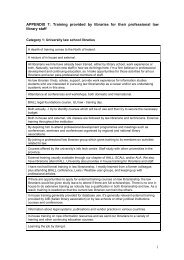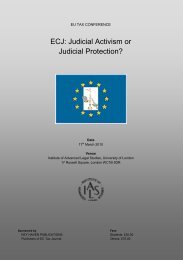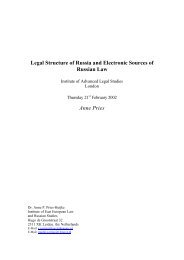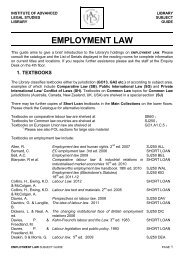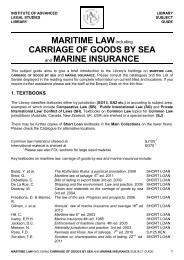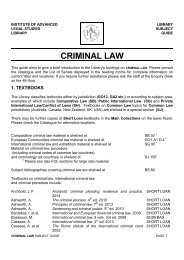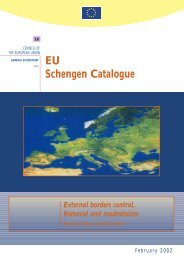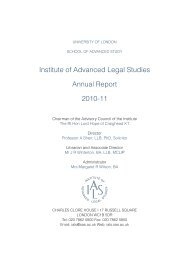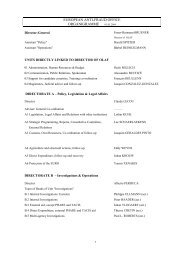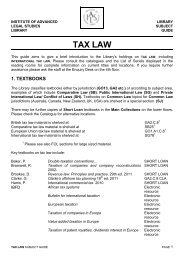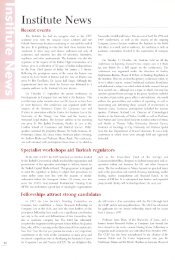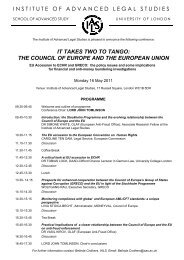a thesis - Institute of Advanced Legal Studies
a thesis - Institute of Advanced Legal Studies
a thesis - Institute of Advanced Legal Studies
You also want an ePaper? Increase the reach of your titles
YUMPU automatically turns print PDFs into web optimized ePapers that Google loves.
RESULTING TRUSTS. 95<br />
tion <strong>of</strong> A.'s estate. In re Orme, Evans v. Maxwell (1884), 50<br />
L.T. 51.<br />
"Where the transferee is expressed to take as trustee verbal<br />
evidence is not admissible to prove that the transfer is intended to<br />
include the beneficial interest (Langham v. Sandford (1811), 17 Yes.<br />
442; 19 Ves. 643; and Irvine v. Sullivan (1869), L. E. 8 Eq.<br />
673). It was admitted in the old case <strong>of</strong> Docksey v. Docksey (1708,<br />
2 Eq. Ca. Ab. 506), but only to prove that the transferee was<br />
intended to take in trust for a person other than the plaintiff.<br />
But in the case <strong>of</strong> Cook v. Hutchinson (1836, 1 Keen, at p. 50,',<br />
which was a case <strong>of</strong> a transfer by deed inter vivos, the Master <strong>of</strong><br />
the Eolls (Lord Langdale) says distinctly that the resulting trust<br />
may be rebutted by parol evidence. In the case <strong>of</strong> Biddulph v.<br />
Williams (1875, 1 Ch. D. 203), also, where the transferee was not<br />
expressed to take as trustee and the transfer was by deed inter<br />
vivos, extrinsic evidence was admitted to show that the transferee<br />
was intended to take beneficially, although it appears from the<br />
report that the defendants waived any objection to the admission<br />
<strong>of</strong> the evidence.<br />
Where, however, the transfer is by will extrinsic evidence is<br />
apparently not admissible.<br />
It is sometimes stated that there is no resulting trust <strong>of</strong><br />
unexhausted residue when the cestui que trust is a charity ; this is,<br />
however, scarcely accurate ; the question is purely one <strong>of</strong> construction.<br />
" We must look at the instruments," said Lord Campbell<br />
in Att.-Gen. v. Dean <strong>of</strong> Windsor (1860, 8 H. L. C. at pp. 393, 394),<br />
" and see whether taking them altogether we discover an intention<br />
on the part <strong>of</strong> the donors that the rents should be divided in certain<br />
proportions and given to the different objects <strong>of</strong> the bounty <strong>of</strong> the<br />
donors in those proportions, or whether the intention manifested is<br />
that specified sums should be permanently paid to particular objects<br />
<strong>of</strong> the bounty <strong>of</strong> the donors, and that they should be entitled to<br />
nothing more than the payment <strong>of</strong> those specified sums, without<br />
abatement and without augmentation." (See Tudor, Charitable<br />
Trusts, 3rd ed. 46 et seq.)



